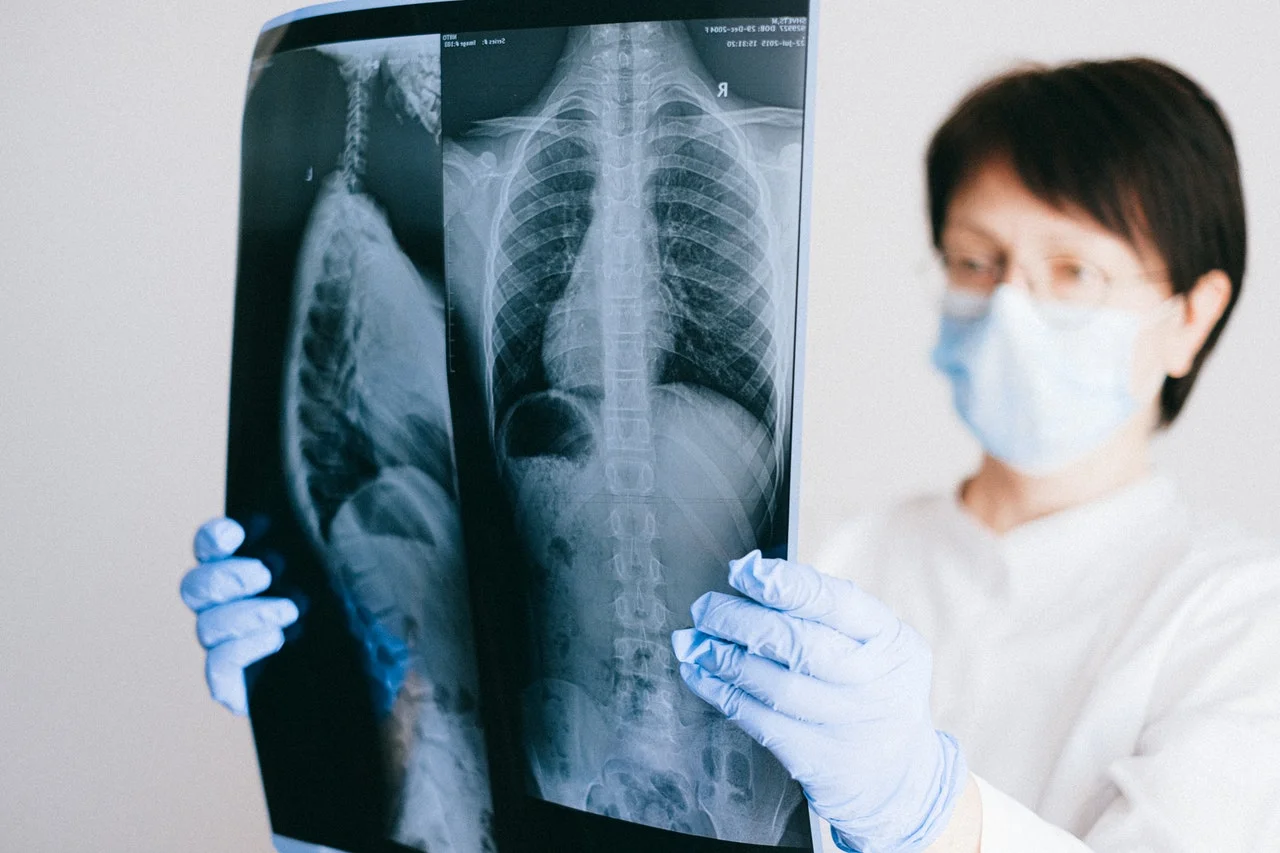Disclaimer: This website provides health information for educational purposes only and is not a substitute for professional medical advice, diagnosis, or treatment. Always seek the guidance of a qualified healthcare provider with any questions you may have.
Pneumonia is one of the most prevalent respiratory diseases in the world, even remaining commonplace in developed nations like the United States.
According to the Centers for Disease Control and Prevention, more than 1.5 million people in the country developed a form of pneumonia in the span of a single year. Over 40,000 of the afflicted passed away from the disease in the same span.
Understanding a disease can be your primary defense against infection and hospitalization. Learn what are the four stages of pneumonia, how is it diagnosed and other important questions about this debilitating respiratory illness.
What is Pneumonia?

Pneumonia is a lung infection that causes inflammation in your lung’s alveoli. These are the small sacs of air inside your chest that process and distribute oxygen throughout your body. Because the infection irritates your lungs, these air sacs begin to fill with liquid, such as blood, pus or other biological substances.
A pneumonia chest X-ray will show these filled sacs as occlusions in the plate.
Pneumonia causes coughing, fevers, shortness of breath, bloody phlegm and other respiratory difficulties.
What are the Kinds of Pneumonia?
Pneumonia is a term for a whole host of lung infections. You can develop this disease from exposure to infected individuals. Hospitalization for unrelated reasons can lead to pneumonia simply because you were in proximity to someone who had it.
For example, nurses are keen to watch out for pneumonia after surgery. This is called hospital acquired pneumonia.
Generally speaking, there are two main types of pneumonia.
-
Bacterial Pneumonia
Bacterial pneumonia is caused by bacterial infections in the lungs. Common bacteria responsible for causing pneumonia include Staphylococcus, Moraxella and Legionella. Bacterial pneumonia is often associated with more risks because the bacteria involved are more resilient.
-
Viral Pneumonia
On the other hand, viral pneumonia is caused by viruses. The common culprits behind this type of pneumonia include adenoviruses, influenza viruses and, most recently coronaviruses. Pneumonia caused by the COVID-19 virus is more deadly because of how quickly it can spread and the increased severity.
What are the 4 Stages of Pneumonia?

Pneumonia progresses through the respiratory system in 4 distinct stages. Doctors can monitor your progress through these stages through X-rays for pneumonia. But what are the 4 stages of pneumonia? They are each named after how the lungs respond to the illness.
Below is a summary of each of these stages.
-
Congestion
The first stage happens within the first 24 hours of the disease. After the incubation period, bacteria and viral particles crowd the lungs. There is little white blood cell response to the infection.
If you were able to see your lungs, you would see they are red from the swelling brought on by the unwelcome substances infesting the alveoli. There may or may not be fever at the time because of the low immune system response to the
-
Red Hepatization
After about 48 to 72 hours of the infection setting in, the presence of bacteria or fluid in the lungs begins interfering with the production of blood cells. This stage is called red hepatization as your lungs become clogged with the shredded debris of dead bacteria, white blood cells and red blood cells. The stage is named because your lungs will turn a dark red like raw liver. You will experience difficulty breathing because of the debris and irritation.
-
Gray Hepatization
Between 4 to 8 days of the infection, your lungs will begin to turn yellowish gray or just gray. This is because more red blood cells are breaking down but they are also accompanied by lung fluid called exudative. The grey coloration can also be enhanced because of the presence of large white blood cells called macrophages. These white blood cells are typically in charge of eating bigger cells than bacteria. Fever and liquid discharge will be common during this stage of pneumonia.
-
Resolution
After 8 or 10 days of infection, your body will begin recovering from the lung disease. You will cough and expel mucus a lot more during the resolution phase as your body begins breaking down and expelling the fluids and other biological products created by the disease. You may still experience fever as your body targets remnants of the disease, but this is uncommon.
How is Pneumonia Diagnosed?

Pneumonia can be mistaken for other kinds of respiratory diseases because its symptoms are so common Coughing and fevers are the highlights of innumerable diseases. Without proper diagnosis, you may risk letting the disease progress unhindered which could lead to complications.
Below are the most reliable methods doctors may use to determine whether your cough is just a lung bug or full-blown pneumonia.
-
Radiography
The most common method is getting an X-ray for pneumonia. This is simply a chest X-ray. A radiologist will check the X-ray for occlusions or dark areas in your lungs that indicate the presence of fluid in the alveoli. More sophisticated imaging techniques such as CT scans will simply replicate this test.
-
Blood Tests
A doctor can supplement other diagnostic tests by ordering blood tests. Laboratories will scan your blood for the presence of alleviated white blood cells. This will indicate that you are experiencing an infection. They can also use blood samples to see what sort of bacteria or virus is afflicting your system.
-
Listening
Another common method to determine which of the 4 stages of pneumonia you may be experiencing is by listening to your breathing. A doctor only needs a stethoscope or similar device to ascertain the presence of fluids in the lungs. However, they may want to supplement this test with one of the other methods just to be sure.
-
Blood Oxygen
Finally, doctors can check your blood oxygenation level. If the amount of oxygen in your bloodstream dips or falls up and down, this could indicate impaired lung function. Sufficiently low blood oxygen levels may require hospitalization to prevent your body from being impaired by the loss.
What are Probable Complications of Pneumonia?

Where you are during the four stages of pneumonia can cause different risks. Worst case scenarios can include necrotizing pneumonia, which is when the infection in the lungs progresses to the point where the tissue itself begins to rot. This can be extremely painful and debilitating.
Other possible complications of pneumonia include the following.
-
Respiratory Distress
Because of the presence of fluid in the lungs and the pathogens infecting its cells, you may experience acute respiratory distress. This presents as rapid breathing, shortness of breath and elevated heart rate. These symptoms occur because your body is dangerously low on oxygen and trying to replenish it faster. The tips of your fingers and your lips may turn blue from the lack of oxygen, a process called cyanosis.
-
Blood Infection
Sepsis or blood infection is yet another complication that could lead to necrotizing pneumonia. The infection progresses from just your alveoli to infecting your bloodstream itself. Because your respiratory system and circulatory system are intimately connected, this could potentially spread the infection to other systems if left untreated.
-
Respiratory Failure
Finally, the worst iteration of pneumonia can lead to complete respiratory failure as the lungs are unable to function due to the infection. This will require extensive medical intervention to prevent complete system failure such as intubation and direct infusion of oxygen into the lungs.
Pneumonia is one of the most common respiratory ailments not just in America but the world. It’s also become a deadly complication to those infected by COVID-19. Understanding specific information about it, such as what are pneumonia’s 4 stages, can be instrumental in guiding your treatment and informing your decisions.

